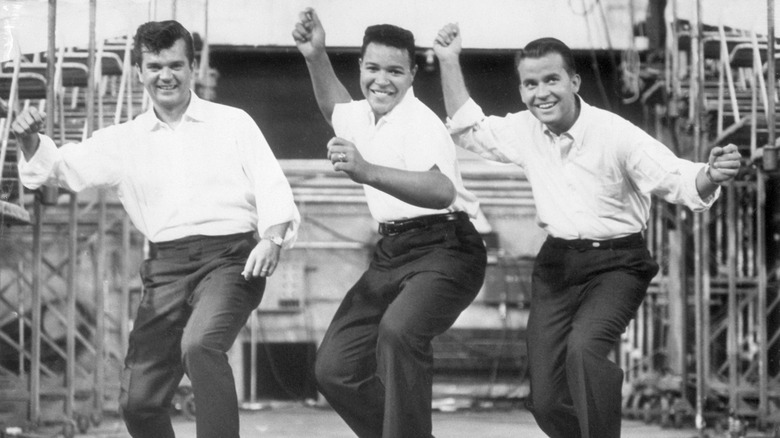Why People Wanted To Ban The Twist
It's difficult today to imagine that anybody could possibly have once been offended by a dance so innocuous as the Twist. Though the early era rock 'n' roll dance move reportedly came before the songs that made explicit reference to it, the high point of the Twist craze came in 1960, when Chubby Checker's cover version of Hank Ballard & The Midnighters' "The Twist," a song which was originally a B-side and reportedly composed after Ballard witnessed a group performing the dance in the late 1950s. Checker's version became a smash hit, reaching the top of the Billboard Hot 100 chart, a feat it repeated two years later. It seemed that no one at the time could get enough of "The Twist" or indeed the dance that first inspired it.
But the fact was in the early 1960s when the Twist fad was having its heyday it was considered deeply subversive by some corners of society who feared that the vigorous new dance craze would have a detrimental effect on the new generation of youths who had taken it up with such abandon.
Straight-up opposition to the twist
It goes against conventional pop music logic for a hit song to cater to a pre-existing dance craze, rather than the other way around. Another unusual aspect of the Twist is that its popularity came in two waves.
Per Click Americana, the first was among teens and was what first inspired Hank Ballard to write the song that would eventually become one of the major hits of the 1960s for Chubby Checker. Then, in 1961, the dance had another resurgence among adults after Checker made a riotous appearance on star-making "The Ed Sullivan Show." His performance was so well received that "The Twist" was re-released as a single, this time catering to an entirely new and older listenership.
But in both cases, the dance was criticized, mainly by religious groups and conservatives who argued that the Twist — which involves swinging your arms and simply rotating each bent leg in turn, with no physical contact between dancers — was lewd as it involved the rhythmic movement of the hips. More bizarrely, the American Medical Association even released a statement claiming that rather than fun and easy cardio, the dance posed a health risk and could possibly cause joint damage for people 40 and older.
A dance with a legacy
Despite various squares attempting to dissuade the American public of the dangers — both physical and moral — of the fun and harmless dance craze the Twist, it proved to be a cultural catalyst with a legacy that runs right through the 1960s and beyond.
Ed Sullivan himself heaped praise upon the dance, claiming it had done widespread good. "Throughout the country, a lot of nightclubs that were darn near out of business have been revived by the Twist," he said. "It's put a lot of performers and bands and waiters and actors to work and has brought a new clement of excitement into TV. And since a lot of sacroiliacs have been thrown out of place, it's proved a boon to doctors. Everyone's gained" (via Click America).
Chubby Checker's wasn't the only hit song to pander to the growing market of newly twisting dancers in the early part of the decade: other dances like the Mashed Potato and the Funky Chicken came along in its wake, also with songs to accompany them. But nothing has stuck in the popular imagination as well or as long as the Twist, which had been immortalized multiple times in classic movies, including "Blues Brothers" and "Pulp Fiction." Meanwhile, Checker's "The Twist" has been added to the National Registry by the Library of Congress, assuring it is preserved for the future.
